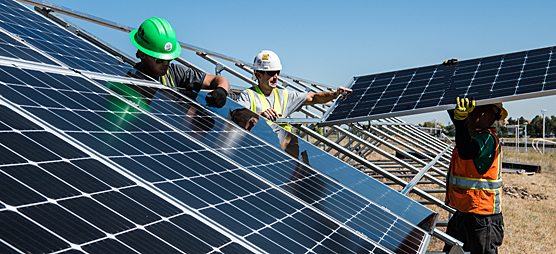
© Unsplash
The Finnish Environment Institute SYKE has published a new greenhouse gas emission reduction planning tool that supports the climate work of municipalities and regions.
The tool can be used to create different emission scenarios based on the current emission situation of each municipality and on various factors and measures affecting emissions. It will help to assess the changes needed in different sectors in order to meet the emission reduction targets set. The use of the tool also supports the impact assessment of regional climate road maps.
“Municipalities and regions have set themselves challenging emission reduction targets, which require a wide range of measures to achieve. The municipal greenhouse gas emission calculation system published by SYKE in February 2020 enables the follow-up monitoring of measures for several different emission sectors. The now published emission reduction planning tool complements this toolbox”, says Senior Research Scientist Laura Saikku from SYKE.
National climate action as a starting point
A key starting point for the scenario work is to determine how general market developments and climate policy measures decided at a national level affect municipal emissions. To illustrate this, a so-called baseline scenario has been built for each municipality as the starting point for the tool.
The baseline scenario takes into account the reports, plans and guidelines to support the implementation of the national climate policy, which outlines Finland's future emissions development. These include the National Energy and Climate Strategy, the Medium-term Climate Change Policy Plan and the Act on promoting the use of biofuels for transport. The impact of the municipality-specific population forecast on emissions development is also taken into account.
Impacts of the municipality's actions brought forward
The methodological description to support the use of the calculation tool provides alternatives and examples of development pathways and climate measures that are more emission-reducing than the baseline scenario. For each sector, the basis for calculating the selections of the target scenario built by the user is also described. The user can choose the reference year 2005–2018 and the target year 2020–2050, all of which have been calculated with a base-scenario emission reduction.
“The baseline scenario is a trajectory in which emission reductions are largely achieved through national actions. However, practical implementation takes place largely at a local level, and it is not possible to achieve emission reductions without the active measures of municipalities, local residents and companies”, says Senior Research Scientist Santtu Karhinen from SYKE.
Changes in the heating method of buildings are essential, the effectiveness of climate action in road transport varies from region to region
The analysis of the energy consumption of the building stock is divided into several sections in the tool defining the level of energy efficiency and heating methods of the existing and new building stock. The distribution of district heating sources and the amount of consumer electricity can also be changed. The tool shows that changes in heating mode are key to reducing emissions from the building stock. The importance of energy consumption in new buildings varies greatly from small rural municipalities to large growth centres.
For road transport, the analysis is divided into a definition of the factors affecting driving performance and the propulsion distribution of the vehicle fleet. For example, the user can examine the impact of the accessibility of services and alternative modes of transport on the driving activities of passenger cars and change, for example, the share of all-electric cars in the vehicle base.
For example, the tool can be used to see that in municipalities with a small population, increasing public transport is not a particularly effective way of reducing emissions, while public transport in larger cities can replace passenger cars. The results of the tool also show that the key to achieving significant emission reductions is to switch to low-emission propulsion powers such as electric cars.
The tool also includes other emission sectors under the emission calculation system as well as various emission credits. In the future, the tool will be developed for other sectors in such a way that it can examine the emission impacts of individual measures in more detail.
Hinku municipality Turku as an example
Turku is aiming for carbon neutrality by 2029. According to the baseline scenario of the tool, Turku's emissions will decrease by 38.5 per cent between 2018 and 2029. Based on the tool, it can be estimated that, in order to achieve the carbon neutrality target, Turku must not only reduce emissions from the baseline scenario, but also phase out the use of heating oil, produce district heating and electricity in a completely carbon neutral manner, and electrify a significant proportion of passenger vehicles, buses and work machinery.
“Already 80% of district heating is produced with renewable energy sources, the City’s own energy company is practically only selling green electricity to consumers, and the number of electric buses will increase tenfold this year”, says Miika Meretoja, Senior Specialist at the City of Turku. “Although emissions have been halved compared to 1990 levels, the tool undoubtedly shows that it is not yet time to catch our breath. At the same time, we must pay more attention also to carbon sinks.”
The tool can also be used to examine alternative measures to achieve an equivalent reduction in emissions by the target year.
Further information
- Senior Research Scientist Santtu Karhinen, Finnish Environment Institute SYKE, firstname.lastname@syke.fi, tel. +358 29 525 1889
- Senior Research Scientist Laura Saikku, Finnish Environment Institute SYKE, tel. +358 400 148 771, firstname.lastname@syke.fi